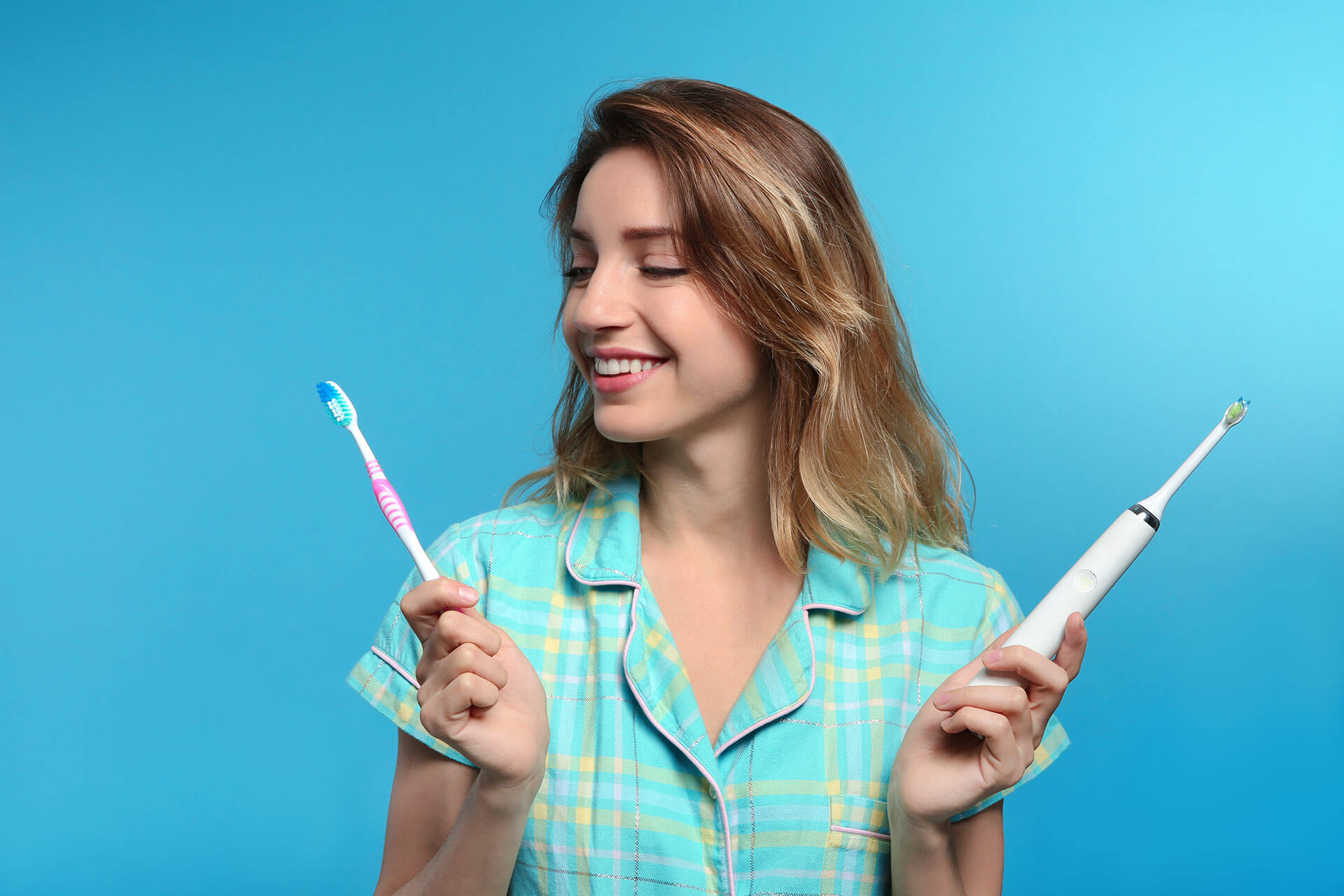Opening Hours
Mon-Fri: 9:00 AM - 5:00 PM
Sat: 9:00 AM - 5:00 PM
Call Us
(02) 7228 7272
Dentist Marrickville | True Smiles Dental

At True Smiles Dental – we firmly believe in preventative care and patient education when it comes to looking after your teeth and gums. That is why your Marrickville dentist or Oral health therapist will usually take some time during your routine check-up and clean appointments to go through your brushing habits and techniques. Patient education enables a better understanding of our dental health, which helps us prevent dental problems and in turn saves our patients from possible pain, time and money.
One of the most commonly asked questions we get at True Smiles Dental is whether an electric toothbrush or a manual toothbrush is better. Truth be told, both types of toothbrushes will remove plaque as well as the other, however there may be reasons why one would be recommended a powered (electric) or manual toothbrush over the other.
But before we get into the specifics of electric and manual brushes: there are 2 main important features most dental professionals would recommend with regard to electric and manual toothbrushes:
1. Soft bristle brushes: when brushing our teeth and gums, we want to be doing so gently. Over time, if we brush too hard or over-brush our teeth and gums, we can cause the gum and bone to recede. When this happens, our teeth start to feel more sensitive to hot, cold, sweets and acidic food and beverages due to the exposed dentinal surface. Your dentinal surfaces are a layer in your tooth that appears yellow in colour, and can be exposed from over-brushing. Using a soft bristle toothbrush will help to minimise the risk of over-brushing or traumatising the gum. Leave the medium or hard bristle brushes for scrubbing your floors!
2. Small compact head: small and compact head toothbrushes allow us to reach our back molars better (especially if you still have your wisdom teeth!). This is because they are easier to manoeuvre and are able to get into the crevices of our teeth better
What is the difference between an electric toothbrush and manual toothbrush?
Hand-held toothbrushes require manual movement to move the bristles around for plaque removal. This movement is usually in a circular motion along the gum line. Electric toothbrushes remove the mechanical element and will either oscillate/rotate or vibrate to disrupt the plaque. No scrubbing motion is needed when using an electric toothbrush as the brush will ‘do all the work for you’.
At the end of the day, both an electric and manual toothbrush can achieve a similar result – plaque removal – so why choose one over the other? Let’s break it down further.
Why choose a manual brush?
Benefits
Disadvantages
Why choose an electric/powered toothbrush?
Benefits
Disadvantages
Which toothbrush is better for my child?
Whether your child would benefit more from a manual or electric toothbrush will depend on how well they are currently brushing and which one they are more inclined to use. This is why it can be good for your children to try both manual and electric toothbrushes to see what they’re most comfortable with.
Letting your child pick their toothbrush whilst at the supermarket can help to motivate them to use it more.
Electric toothbrushes for kids can offer excitement when it comes to brushing time. A lot of children’s toothbrushes may have flashing lights, songs, timers or feature their favourite character to help with motivation and make brushing fun.
Children undergoing orthodontic treatment may also benefit from an electric toothbrush as orthodontic appliances such as braces can make it much more difficult to clean. By taking out the guesswork for children, the electric toothbrush can help keep your children’s teeth and gums healthy for the duration of their treatment.
Some kids however, may not like the sound or vibration of an electric toothbrush. Children with sensory sensitivity may prefer to use a manual brush. Manual brushes often come in a variety of colours and can also feature their favourite cartoon characters.
Overall, children are more likely to develop healthy long-term habits if they enjoy brushing from a young age, so making it fun with reward charts or allowing them to pick their own toothbrush can help with this. The team at True Smiles Dental looks after smiles of all ages and encourage kids to see a dental professional every 6 to 12 months to ensure all teeth are developing on track and all their teeth are healthy.
Oral Hygiene
Regardless of toothbrush preference, maintaining good oral hygiene habits is important to maintaining a healthy mouth. This may include:
Verdict
Ultimately, whether you decide to use a manual toothbrush or an electric toothbrush will come down to personal preference and overall experience. Provided the correct brushing technique is adopted, a manual toothbrush can still provide an effective clean and help protect your teeth against gum disease and dental decay. However, those with dexterity challenges, younger children and those seeking an easier brushing experience may wish to consider investing in an electric toothbrush.
If you’re uncertain about the best toothbrush or oral hygiene tool for your needs, your Marrickville Dentist or Oral health therapist at True Smiles Dental can help provide the best advice. During our hygiene appointments, we adopt a Guided Biofilm Therapy (GBT) protocol which means we plaque disclose your teeth to identify missed areas of plaque and biofilm in your mouth prior to a professional clean with our EMS airflow. This helps to tailor our oral hygiene advice specifically to each individual as needed.
Contact the team at True Smiles Dental, Marrickville today for an appointment on (02) 7228 7272 or book online today at https://truesmilesdental.com.au/appointment to make an appointment.